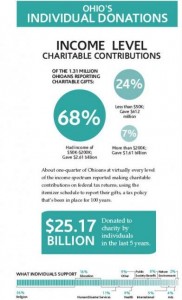A number of factors impact the sustainability of rural communities in Eastern Ohio. Some of the factors have a positive impact, and others provide a challenge. A challenge can lead to what we call at Ohio State University Extension-Community Development a teachable moment. Most recently, federal, state and county budgets have been tightened or money has been directed to different initiatives. This has become a teachable moment for OSU Extension-Community Development to grow philanthropic capacity in the community.

How did we do that and what does that mean for you? Two words come to mind….Capital Campaign. A capital campaign is an intense effort to raise significant dollars in a designated period of time for a one-time need, usually a structure or building. OSU Extension-Community Development has worked with the YMCA and Southeastern Ohio Regional Medical Center (SEORMC) in Guernsey County to advance their capital campaigns. These two campaigns will provide two new structures and buildings in the community.
The YMCA will have an additional 3,400 square feet of program space. The additional space makes it possible for 1,000 new members and 15 new classes for almost any age group from 2 years old through senior age adults. The SEORMC capital campaign will build a cancer center. The goal of the hospital is not just a cancer building but also supportive programs for those in treatment. These are two of several philanthropic initiatives in the community that will affect many individuals and families and contribute to the quality of life in the community.
If you are interested in building philanthropic capacity in your community, please contact OSU Extension-Community Development.
 Cindy Bond is an assistant professor and educator, community development (CD), OSU Extension-Guernsey County.
Cindy Bond is an assistant professor and educator, community development (CD), OSU Extension-Guernsey County.
 A focus group is in essence a group interview based on a set of questions or discussion points. It is qualitative research designed to explore people’s opinions and attitudes. Focus groups ask open-ended questions and avoid questions that can be answered with yes or no answers. A typical focus group may consist of 6-8 people. A number of focus groups are usually conducted to get an ideal mix of information. Focus groups typically last 1-3 hours.
A focus group is in essence a group interview based on a set of questions or discussion points. It is qualitative research designed to explore people’s opinions and attitudes. Focus groups ask open-ended questions and avoid questions that can be answered with yes or no answers. A typical focus group may consist of 6-8 people. A number of focus groups are usually conducted to get an ideal mix of information. Focus groups typically last 1-3 hours. Focus groups tend to take place with a small sample size in an interactive group setting. They create a way to encourage participants to share ideas and express opinions and attitudes and are an effective way to facilitate open discussions and allow participants to express themselves deeper than a less personal survey, and dive deeper into certain issues.
Focus groups tend to take place with a small sample size in an interactive group setting. They create a way to encourage participants to share ideas and express opinions and attitudes and are an effective way to facilitate open discussions and allow participants to express themselves deeper than a less personal survey, and dive deeper into certain issues. The participants selected must be able to answer the questions and must be familiar with the topic discussed. Participants are selected based on criteria relevant to the organization/concept including existing or potential customers.
The participants selected must be able to answer the questions and must be familiar with the topic discussed. Participants are selected based on criteria relevant to the organization/concept including existing or potential customers. As an OSU Extension professional, it is the time of year that we receive invitations to
As an OSU Extension professional, it is the time of year that we receive invitations to  This year, the ESP National Meeting initiated a mentoring program as a way for seasoned professionals to
This year, the ESP National Meeting initiated a mentoring program as a way for seasoned professionals to  There are a variety of ways to teach children to respect the needs of others and do kind things. Children need to know that it is important to give of ourselves to others. As adults, we can teach philanthropy every time we talk to children and by demonstrating compassionate behavior through giving. We can demonstrate how to give our time, talent, or treasure.
There are a variety of ways to teach children to respect the needs of others and do kind things. Children need to know that it is important to give of ourselves to others. As adults, we can teach philanthropy every time we talk to children and by demonstrating compassionate behavior through giving. We can demonstrate how to give our time, talent, or treasure.
 What communities in Ohio feel the most significant impact of new energy development? Rural communities with relatively low population density and little economic and social diversification experience the most significant effect according to research. Such communities are exposed to the long-term economic fluctuations experienced by natural resource dependent economies. They cannot easily absorb change and the development that has been associated with challenges related to social and family services, agriculture and land issues, and community infrastructure. How can we help? We can focus on increasing community capacity and enhancing education and training.
What communities in Ohio feel the most significant impact of new energy development? Rural communities with relatively low population density and little economic and social diversification experience the most significant effect according to research. Such communities are exposed to the long-term economic fluctuations experienced by natural resource dependent economies. They cannot easily absorb change and the development that has been associated with challenges related to social and family services, agriculture and land issues, and community infrastructure. How can we help? We can focus on increasing community capacity and enhancing education and training.
 A case study was conducted of a county in Eastern Appalachian Ohio with a population of 42,000. In this community where 13 hotels are located, five have been built in the past three years. With the increased capacity and occupancy of hotels has come an increase in the bed tax. This year a decline has begun in the bed tax due in large part to the reduction in energy exploration.
A case study was conducted of a county in Eastern Appalachian Ohio with a population of 42,000. In this community where 13 hotels are located, five have been built in the past three years. With the increased capacity and occupancy of hotels has come an increase in the bed tax. This year a decline has begun in the bed tax due in large part to the reduction in energy exploration. Community resilience is a complex construct with many interrelated factors. One issue impacts and overlaps many things. For example, social, environment and economic issues may seem different, but they all have an impact on each other. Economic issues impact all facets of a community. Infrastructure as a part of an economic issue includes water, transportation, and telecommunications are important tools. These economic issues are important to allow people in the community to carry out daily activities. Infrastructure as a part of rural resiliency is necessary to help the community function and provide support service to many different aspects such as housing and employment. The absence of these services within a community is detrimental to the quality of life of a community and its members.
Community resilience is a complex construct with many interrelated factors. One issue impacts and overlaps many things. For example, social, environment and economic issues may seem different, but they all have an impact on each other. Economic issues impact all facets of a community. Infrastructure as a part of an economic issue includes water, transportation, and telecommunications are important tools. These economic issues are important to allow people in the community to carry out daily activities. Infrastructure as a part of rural resiliency is necessary to help the community function and provide support service to many different aspects such as housing and employment. The absence of these services within a community is detrimental to the quality of life of a community and its members. The majority of philanthropic giving, about 80%, comes from individuals. Another trend in philanthropic giving that may also surprise some people is who gives. According to Ohio Gives, 68% of individual contributors had an income level of $50K-$200K. It is not just wealthy individuals who give.
The majority of philanthropic giving, about 80%, comes from individuals. Another trend in philanthropic giving that may also surprise some people is who gives. According to Ohio Gives, 68% of individual contributors had an income level of $50K-$200K. It is not just wealthy individuals who give. Who hasn’t been part of a group that feels ‘stuck’ or lacking direction? When a group’s purpose isn’t clear and there is little direction for making key decisions, being a part of such efforts can be tough. Save yourself and the groups you work with a lot of muddling later by doing a little homework up front. Check out the newly revised CD fact sheets by
Who hasn’t been part of a group that feels ‘stuck’ or lacking direction? When a group’s purpose isn’t clear and there is little direction for making key decisions, being a part of such efforts can be tough. Save yourself and the groups you work with a lot of muddling later by doing a little homework up front. Check out the newly revised CD fact sheets by